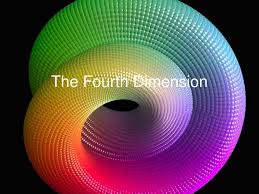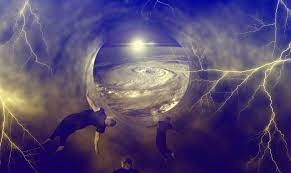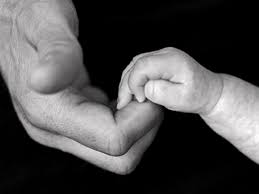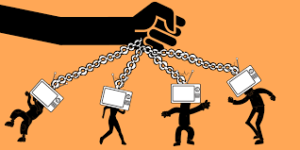Religious Beliefs

Through the ages humans have always been involved with religion. They have always been aware of God- energy, but oftentimes have distorted it to serve their own purposes and justify their actions and imposed beliefs. We have used it for various objectives and because of it powerful nature to has become a tool for us to control ourselves and others. With the illusion of beliefs that only serve to control our desires we have created roadblocks to our soul’s evolution. The natural aggressiveness of our creature-hood has been so repressed that we find oneself unable to control our pent-up energy at times. We have further damned up our being with our obsessive beliefs about guilt-ridden issues such as our own sexuality. We have denied our being the very pleasures of its creature-hood and again found ourselves wallowing in a sea of frustration.

Take for instance the the religious beliefs of the world. Many of these religions have made it mandatory to deny our own being and its natural aggression and sexuality, taking the word aggression and turning it into a negative when it is a part of the natural state of every living thing on the planet. Without natural aggression mankind/womankind would not have been able to survive, as his/her own creative abilities stem from this. As a flower blooms, it is performing its own natural aggression. This is a natural process of creature-hood and when used in a positive way can be very beneficial for our soul’s evolution. Even negative natural aggression can be a learning experience, for it forces one to confront their emotions.

If we take a society and tell them that they are to deny the forces of their physical being, the energy that would naturally be released has nowhere to go. It then begins to manifest itself in all sorts of repressed emotions until the physical being can no longer tolerate it and the self will act out in a highly aggressive nature or will force itself into an illness. Either way, the power of the being is damned up in such a way as to literally blow itself up. I might add that this is what happens when we hear of people who have been thought to spontaneously combust. Although this is a rare event, it can happen. The pent-up energy has nowhere to go. The individual is not given an avenue for release in their own perceived belief system. Instead, these individuals should be encouraged to release the restless energy they have, and try to find peace in nature with the help of energy healing (visit websites of companies like LightSong to learn more) and similar spiritual practices. A person can only truly let go of anger once they discover some sense of inner peace, and keeping turbulent emotions inside is not the way to go about it.

Religion have been notorious for trying to control the masses with mass systems of guilt-ridden indoctrination. The so-called religious leaders who were involved in writing the various manuscripts, were well aware that in order to tether us to their way of thinking they would have to make us feel guilty and unworthy, thus roping us into their belief systems and ultimately having control over you-the-soul. This gave them much power, but was in direct conflict with the intended messages of the Consciousness of God. We were stripped of our free will and made to feel embarrassed and guilty about our bodies. The body is a vehicle of expression and learning. It is the vessel with which we communicate with one another. When we truly understand this , we will be free to experience our soul’ true nature.

We were also told that we were sinners, unworthy, yet created in the likeness and image of our god. What then does this say about our god? If one were to believe that, then one would have to say that our god was unworthy and a sinner, for we were supposedly made in his/her image. This is not so, yet we have believed this for centuries, not even questioning as to why. The God of the Universe created us out of his/her love and in The Creator’s eyes we are no less than perfect.

The beliefs of some nations have not changed since the inception of these documents and have held firm for thousands of years without much cause for question. With the advent of modern transportation and the abilities of nations to move their citizens from place to place relatively easily, came a new era of information to many cultures. We now have entire civilizations questioning their beliefs, seeing the rest of the world and the way it is developing or not developing and in a sense confronting those issues openly. Many are torn between their society’s system of beliefs and their new ideas of freedoms that they could have. Many of the beliefs of these nations were directly associated with their man/woman-created versions of god.

Let us discuss mankind’s/womankind’s perception of God. Down through the centuries man/woman have always known that there was a force behind the creation of the Universe. Whether it was in his/her limited environment or in his visions of the stars he/she have always been aware that there was a greater force other then his/her own being. Many ancient cultures and civilizations were very in-tune with this force. As highly aware citizens of the planet they had much respect for the energies responsible for creation. It wasn’t until the last several thousand years that the power and image of the Divine Creator was brought into a human perception. Mankind/womankind felt it was to his/her advantage to put a face on the Creator, thus humanizing him/her to however he/she perceived. Along with this idea the hierarchy of religious leaders decided to take power of this newly created human god into their own hands. This perpetuated many myths and misrepresentations of who and what God was. The idea of God being a god of good and evil also came into play as another way for the religious leaders to control their followers by putting their ideas under the name of God and god’s rules and regulations, that mankind/womankind was supposed to live by. They lost sight of the fact that God is a force of pure energy that radiates with an abundance of love’s light and embodies every living thing. Because of the controlling religious idealists, all power that was once known by all of humanity as part of its own divinity was removed. It was given to this self-created man’s/woman’s god.

We have many versions of God in our nations at this time, all with their different mass belief systems, The writers of the manuscripts that we hold to be true, have had a hand at distorting the original messages at one point or the other and realigning them to fit their own perceived way of thinking. All of these versions have their various sets of man-made/woman-made rules, all mean to in some way or another prevent mankind/womankind from realizing the true purpose of his/her soul.

Mankind/womankind has been locked in an abyss, waiting patiently, believing that eventually he/she would be released and able to experience his whole being. His/her beliefs within the power structures of the religious organizations have kept him/she in the dark for many thousands of years. We cannot turn the infinite energy source of All That Is into a human. As much as our religious organizations would have us believe it, this is simply not the case. This energy source does not wear one face. It is everything in all of creation. All That Is is exactly that – All That Is.

Understand, the leaders of our religious organizations for the most part had good intentions when putting this system of beliefs together, but the same time, they were denying humanity the ability to experience itself. Most if not all of our wars have been created because of the misconceptions about God, as we perceive him, again “him/her” being loosely used here as this is our frame of reference. We have judged everyone and everything to the distorted ideas o f our illusions. We have been pitted against each other for what seems to be eons, competing and judging rather than cooperating with each other. Until mankind/womankind can break itself free from the spiritual ignorance of these beliefs, many more wars will be perpetrated. The belief systems of the masses are able to, so shall was say, swing with the tides, however it will take a powerful force to set things in motion. That powerful force is already manifest in our world as The Christ essences and will soon make himself known to all. Energy personalities are preparing us for the impending shift in consciousness and the emergence of the World Teacher. Return ourselves to the love that you-the-soul have always known. The soul does not know hate, greed, judgment, evil. These are all things that mankind/womankind and his/her ego self have subscribed to and in doing so, he/she has fallen further always from knowing the divine purpose of his soul. when you remove our judgment, we empower our wisdom. When we have wisdom, we will have peace.

GOD IS YOU
We have always known that we were not in this Universe alone for it is written in our ancient manuscripts and it it part of our soul’s knowledge. Through religious beliefs, much of humanity has been locked into believing that they are the only living beings in creation. This idea is so wildly absurd that we cannot help but be mystified as to how mankind/womankind has been able to elevate itself in such a manner as to think that the entire cosmic Universe revolved by and create one planet to be inhabited by one species of humans and then say, “Well that’s it I’m done, I’ll learn everything from this group.” God, The Creator of whatever term we wish to use, is all part of the same energy source of All That Is and we are part of it. God is Us. All That Is encompasses many life forms in many Universes and on many planets. Most of them are far more evolved than Earth and its inhabitants.

There are hierarchies and Creator Gods in all of them and in us and every living thing ever created, whether it’s a plant, animal, insect or mineral. Everything in the multitude of creation stems from the infinite energy source of All That Is. The Creator Essence is one of the higher members of the Hierarchy of our planet and has decided to remain in service to Earth. This entity could have moved on to other planets and solar systems but chose not to. There are various levels of Hierarchy on all planets in creation. The Christ has been in our world several times to help humanity in its evolution, each time bringing forth messages that would assist in our evolution. Until we can break free and understand that we all have subscribed to the mass belief system of others, and have ignored the original messages of The Christ essence, we have stifled our soul’s growth. These messages go back further than the in conception of the world manuscripts known as our bible. But let us look at the bible for instance, for that is part of our Christian world’s belief system. Many of the messages from The Christ essence were either left out or distorted and many man-made/woman-made beliefs and messages attached to it. Many of the messages were so simple but humanity proceeded to distort them to fit into their reality at the time.

I will give an example here: Let us take the anticipated Antichrist awaited by Christianity. According to these beliefs, millions are awaiting the appearance of an Antichrist that will deceive and try to capture them into a false spiritual abyss. This is an obvious distortion of the Antichrist event that has already happened in our history. It happened with the Hitler regime and the slaughter of millions of people on our planet. Millions of people were branded with the tattoo of this Antichrist and thus this prophecy has already been fulfilled. Yet The Christian religious organizations cling to their ideas that this event is still to come. It has passed and as I have stated earlier, The Christ entity is now manifest in our world today and is working quietly among us until such time as he chooses to reveal himself/herself to humanity.

The Manipulation of Spiritual Truths
There are many distortions in other religious manuscripts as well. Much of the information was put into human comprehension with its own devices to control the masses inserted, hence the guilt and repression. The soul was not allowed to joyously experience its being. The nature of the soul’s human existence was under speculation and scrutiny. We were given many behavioral modifications because of the perceived fears of the ones in control. Our energies were then locked away from us for fear that if we did not, meaning mankind/womankind, succumb to the will of the religious leaders, we would be forever burned in our fiery pits of hell etc. etc. etc. All religions have their own facets of gloom and doom, taking the love away from God and putting fear there instead.
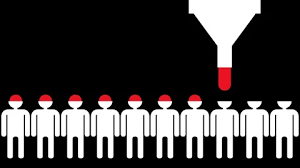
The religious leaders were quite good at manipulating the masses since the masses were under the belief they were not in control of their own spiritual nature. In the beginning there were heavy prices to pay for not staying within the guidelines of what the religious leaders considered acceptable behavior of the norm. No one wished to be burned at the stake. Anyone with any awareness of their soul’s true purpose was given the title of “demonic” or “possessed.” Nothing could have been further from the truth. They had an awareness that was feared by the religious leaders, for if the masses were aware that the manuscripts that they held to be completely true had been doctored in order to control them and keep the money flowing into religious leader’s pockets, they would not keep coming and believing. It was imperative that they be silenced and accused of being witches or possessed by the devil, another way to keep mankind/womankind in the dark by feeding him/her a steady diet of fear, fear of the devil, and in doing so they gave power to the source they had created. In acknowledging this kind of thinking and accepting it into our belief system, we create a reality for it. It becomes manifest within our thoughts and belief systems.

For the most part, our biblical manuscripts were trying to allude us to the fact that our behaviors would affect the outcome of our lives. It was put into a storybook fashion so as to be understood and accepted by all. Religions have always to some extent followed the development of mankind’s/womankind’s consciousness. However, not all the written information fines one the truth, since much if it has been distorted and rewritten over and over again. Much of it was deliberately distorted, for the original manuscripts have yet to found. Most of them are buried deep within the mountains of our planet. The negative influences have also quite cleverly written their own distorted versions of the truth and many religious organizations are following and believing those distorted manuscripts and holding them with much reverence and sacredness. There are and always have been negative influences that have fought to keep the citizens of Earth in the dark about their soul’s true purpose.

Now don’t misunderstand me here, because there have been many good things to come out of religious organiztions and humanity needs to acknowledge their religious beliefs and socialize within the structures of organized religion, It is part of our spiritual evolution as a soul. Many religious organizations are involved in helping humanity throughout the world. They are encouraged to continue and cooperate with the rest of humanity in bringing our world into the next phase of its evolution. It is imperative that humanity’s religious forces join together, united as one, for the spiritual enlightenment of all citizens on the planet. Instead of competing with each other, join together as one, and move into the peaceful harmonics of the new world awareness. If we are in alignment with the will and plan of The Creator, then we will recognize when the belief systems of the divided religious organizations of the world need healing. Our energies, thoughts and beliefs are the tools needed for this healing.
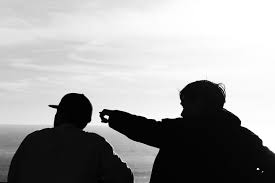
We would benefit greatly to move ourselves beyond the old ideas of one self, one world, one Universe, for this is surely not the case, and in doing so we will experience the vast richness of our being that we have denied for so long. It is important for the survival of the species to open itself up to other probabilities and realities. Questioning honestly the underlying motives of some of the doctrines and rules of the religious organizations will enable us to see that what was supposed to be a joyous positive experience for the evolution of our soul has been doctored to such a degree that it has done just the opposite. It has kept us in the prisons of guilt and repression, thus denying our own personhood.

We have the power to unite humanity and change our world for the better with our thoughts, beliefs and actions. We are the directors of our world and Universe. All comes from us and is within us. God’s creation in our world is unending. What he/she has not created is not real it is only an illusion. We are the co-creators of our Universe. We are all one. we are all Gods.



